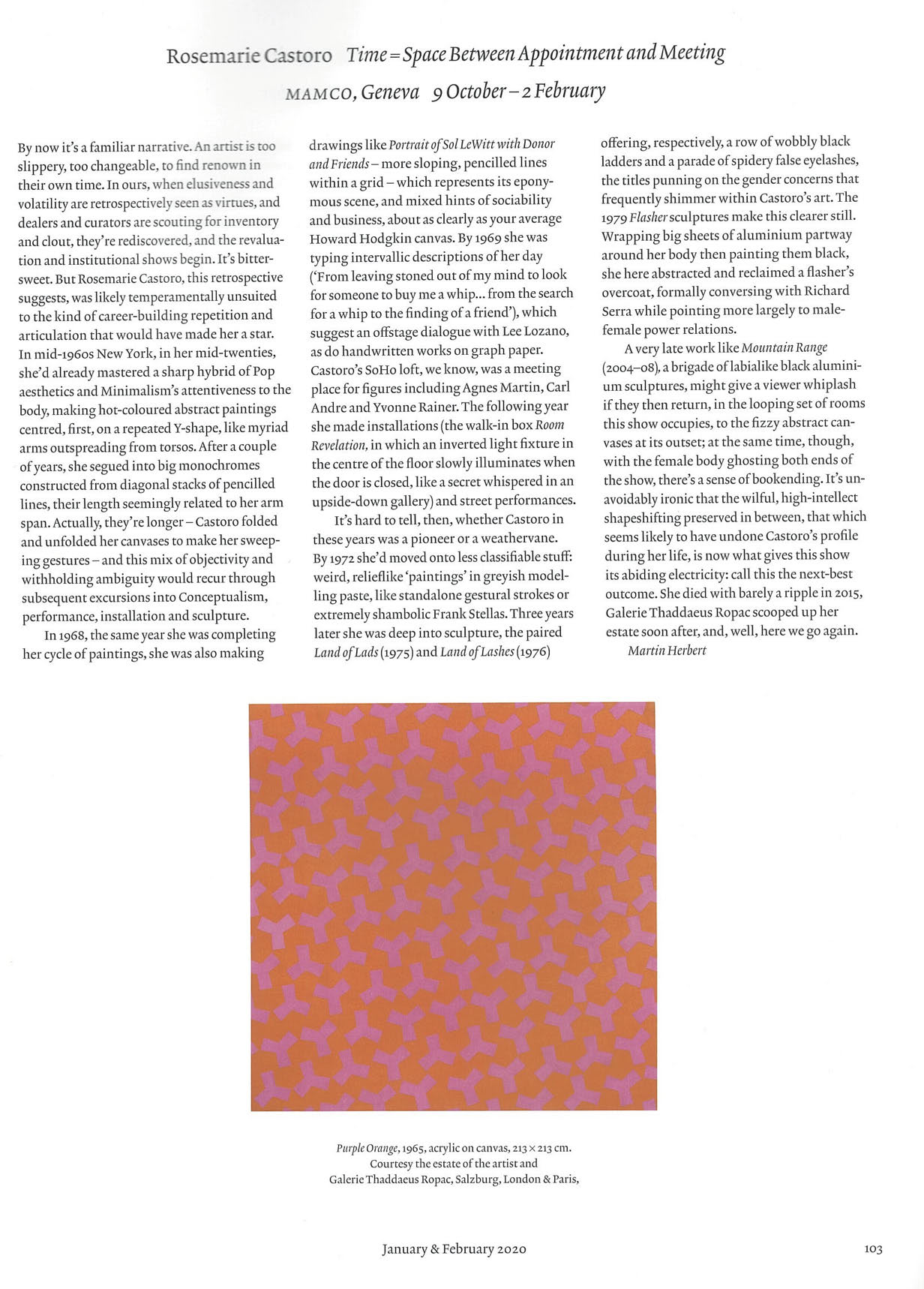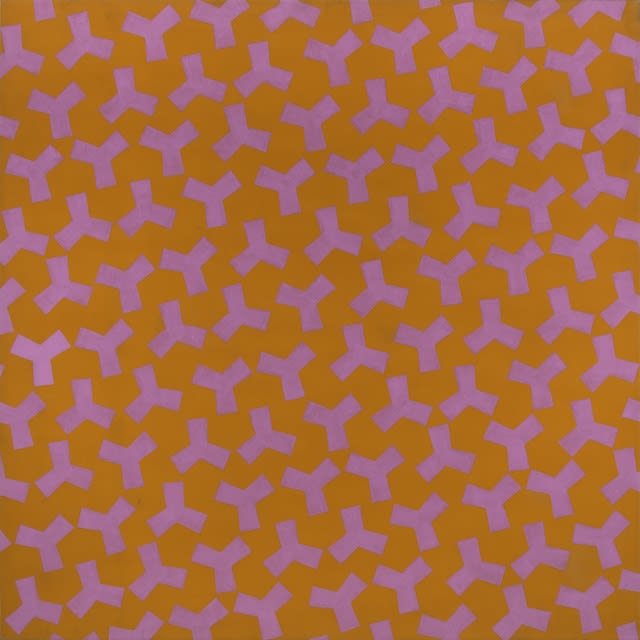
Rosemarie Castoro
Time = Space Between Appointment and Meeting

By now it’s a familiar narrative. An artist is too slippery, too changeable, to find renown in their own time. In ours, when elusiveness and volatility are retrospectively seen as virtues, and dealers and curators are scouting for inventory and clout, they’re rediscovered, and the revaluation and institutional shows begin. It’s bittersweet. But Rosemarie Castoro, this retrospective suggests, was likely temperamentally unsuited to the kind of career-building repetition and articulation that would have made her a star. In mid-1960s New York, in her mid-twenties, she’d already mastered a sharp hybrid of Pop aesthetics and Minimalism’s attentiveness to the body, making hot-coloured abstract paintings centred, first, on a repeated Y-shape, like myriad arms outspreading from torsos. After a couple of years, she segued into big monochromes constructed from diagonal stacks of pencilled lines, their length seemingly related to her arm span. Actually, they’re longer – Castoro folded and unfolded her canvases to make her sweeping gestures – and this mix of objectivity and withholding ambiguity would recur through subsequent excursions into Conceptualism, performance, installation and sculpture.
In 1968, the same year she was completing her cycle of paintings, she was also making drawings like Portrait of Sol LeWitt with Donor and Friends – more sloping, pencilled lines within a grid – which represents its eponymous scene, and mixed hints of sociability and business, about as clearly as your average Howard Hodgkin canvas. By 1969 she was typing intervallic descriptions of her day (‘From leaving stoned out of my mind to look for someone to buy me a whip… from the search for a whip to the finding of a friend’), which suggest an offstage dialogue with Lee Lozano, as do handwritten works on graph paper. Castoro’s SoHo loft, we know, was a meeting place for figures including Agnes Martin, Carl Andre and Yvonne Rainer. The following year she made installations (the walk-in box Room Revelation, in which an inverted light fixture in the centre of the floor slowly illuminates when the door is closed, like a secret whispered in an upside-down gallery) and street performances.
It’s hard to tell, then, whether Castoro in these years was a pioneer or a weathervane. By 1972 she’d moved onto less classifiable stuff: weird, relieflike ‘paintings’ in greyish modelling paste, like standalone gestural strokes or extremely shambolic Frank Stellas. Three years later she was deep into sculpture, the paired Land of Lads (1975) and Land of Lashes(1976) offering, respectively, a row of wobbly black ladders and a parade of spidery false eyelashes, the titles punning on the gender concerns that frequently shimmer within Castoro’s art. The 1979 Flasher sculptures make this clearer still. Wrapping big sheets of aluminium partway around her body then painting them black, she here abstracted and reclaimed a flasher’s overcoat, formally conversing with Richard Serra while pointing more largely to malefemale power relations.
A very late work like Mountain Range (2004–08), a brigade of labialike black aluminium sculptures, might give a viewer whiplash if they then return, in the looping set of rooms this show occupies, to the fizzy abstract canvases at its outset; at the same time, though, with the female body ghosting both ends of the show, there’s a sense of bookending. It’s unavoidably ironic that the wilful, high-intellect shapeshifting preserved in between, that which seems likely to have undone Castoro’s profile during her life, is now what gives this show its abiding electricity: call this the next-best outcome. She died with barely a ripple in 2015, Galerie Thaddaeus Ropac scooped up her estate soon after, and, well, here we go again.
Rosemarie Castoro, MAMCO, Geneva, 9 October 2019 through 2 February 2020
From the January & February 2020 issue of ArtReview

Rosemarie Castoro, Purple Orange, 1965. AR January & February 2020